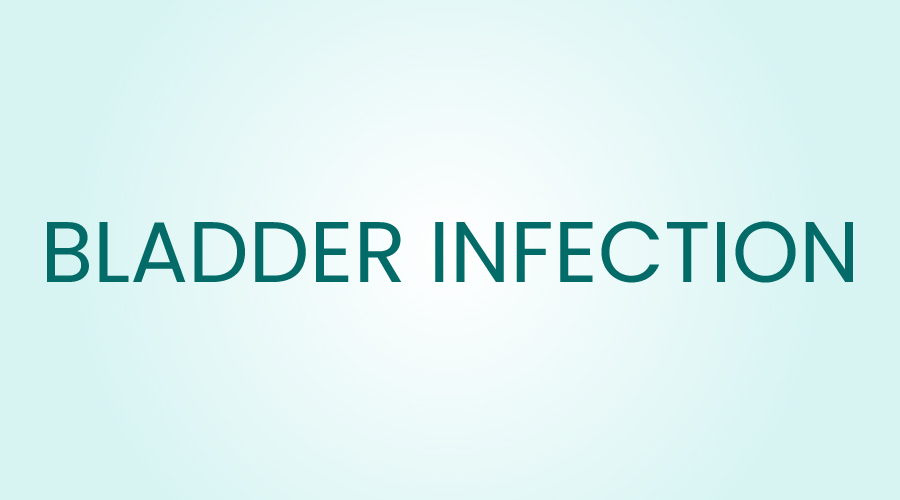

A bladder infection is primarily a bacterial infection affecting the bladder, although individuals with weak immune systems can also develop bladder infections caused by yeast. It is the most prevalent form of urinary tract infections (UTIs). These infections can lead to bladder inflammation. While most bladder infections are acute and have a sudden onset, some become chronic, if the infection is not cleared completely, recurring over an extended period.
Early treatment is crucial to prevent the infection from spreading. Here’s all you need to know about urinary bladder infection, its symptoms, causes, and treatment.
Bladder Infection Symptoms
Bladder infection symptoms can vary in severity, with noticeable changes occurring during urination. Common symptoms include:
- Pain or a burning sensation while urinating
- Urine that is cloudy or bloody
- Increased frequency of urination
- Urine with a foul odour
- A frequent and urgent sensation to urinate
- Cramping or pressure in the lower back or lower abdomen(suprapubic)
As bladder infections progress, they can lead to mid-back pain, which is typically associated with kidney infections. Unlike regular muscular back pain, this bladder infection pain persists regardless of your activity or position.
Bladder Infection Causes
Bladder infections are typically caused by bacteria that enter the bladder after initially entering through the urethra. Normally, the body eliminates these bacteria by flushing them out when you urinate. However, under certain circumstances, bacteria can adhere to the bladder’s walls and rapidly multiply. This overwhelms the body’s natural defence mechanisms and leads to a bladder infection.
The primary culprit behind most bladder infections is Escherichia coli (E. coli). This kind of bacteria naturally resides in the large intestines. Infections can occur when bacteria from stool come into contact with the skin and find their way into the urethra. In women, the urethra is relatively short, and its external opening is in close proximity to the anus, facilitating the easy transfer of bacteria from one body system to another.
Bladder Infection Risk Factors
Individuals of any gender are susceptible to a bladder infection but studies show that adult women are approximately 30 times more prone to these infections than men. In fact, most women are likely to suffer from a bladder infection at least once during their lifetime. One reason is that the female urethra is in closer proximity to the rectum compared to the male urethra. This shorter distance provides an easier path for bacteria to travel and lead to an infection.
In men, the risk of bladder infections may increase with age. As men grow older, they become more susceptible to conditions like enlarged prostate, also known as benign prostatic hyperplasia. Such prostate issues are a common cause of urinary tract problems in men, as it puts pressure on the urethra and impedes the free flow of urine.
Additional risk factors for bladder infections include:
- Advancing age
- Sexual intercourse
- Use of spermicide for birth control
- Changes in the vaginal bacterial balance
- Delayed urination after sexual intercourse
- Previous kidney or bladder infections within the past year
- Structural alterations in the urinary system
- Pregnancy
- Menopause
Bladder Infection Treatment
Here’s what bladder infection treatment involves:
1. Medications
Oral antibiotics are employed to eradicate the bacteria responsible for the bladder infection. If you are suffering from burning sensations and pain, your doctor may also provide medication to alleviate these symptoms. The most frequently prescribed medication for the pain and burning sensations linked to bladder infections is phenazopyridine.
2. Home Treatment
In addition to antibiotics, you can take other measures at home to aid in the treatment of the bladder infection:
- Drinking an ample amount of fluids can aid in flushing out the bacteria from your bladder. Water is the preferred choice as it is devoid of artificial sweeteners and caffeine, both of which are known to irritate the bladder.
- While concentrated cranberry solutions, extracts, and juices may help prevent infections, you shouldn’t solely rely on them to treat a bladder infection.
- D-mannose, a natural sugar derived from fruits like blueberries or cranberries, is available in the form of capsules or powder. D-mannose can prevent UTIs at rates similar to antibiotics.
- The application of oestrogen cream can assist individuals, particularly during or after menopause, in treating and preventing UTIs. Oestrogen helps maintain a healthy balance of good bacteria in the vagina, which can protect against infectious bacteria.
Conclusion
The majority of bladder infections typically improve within 48 hours of commencing the appropriate antibiotic treatment. It is crucial to complete the full course of antibiotics as prescribed, even if you start to feel better. Some bladder infections can deteriorate and extend to the kidneys, potentially caused by antibiotic-resistant bacteria strains, underlying health conditions or inadequate/delayed treatment.
Taking proactive measures to address bladder infections can reduce the risk of their development, alleviate discomfort, and minimise potential complications. Seeking prompt treatment is essential, as it reduces the risk of infection spreading and ensures a faster recovery.




